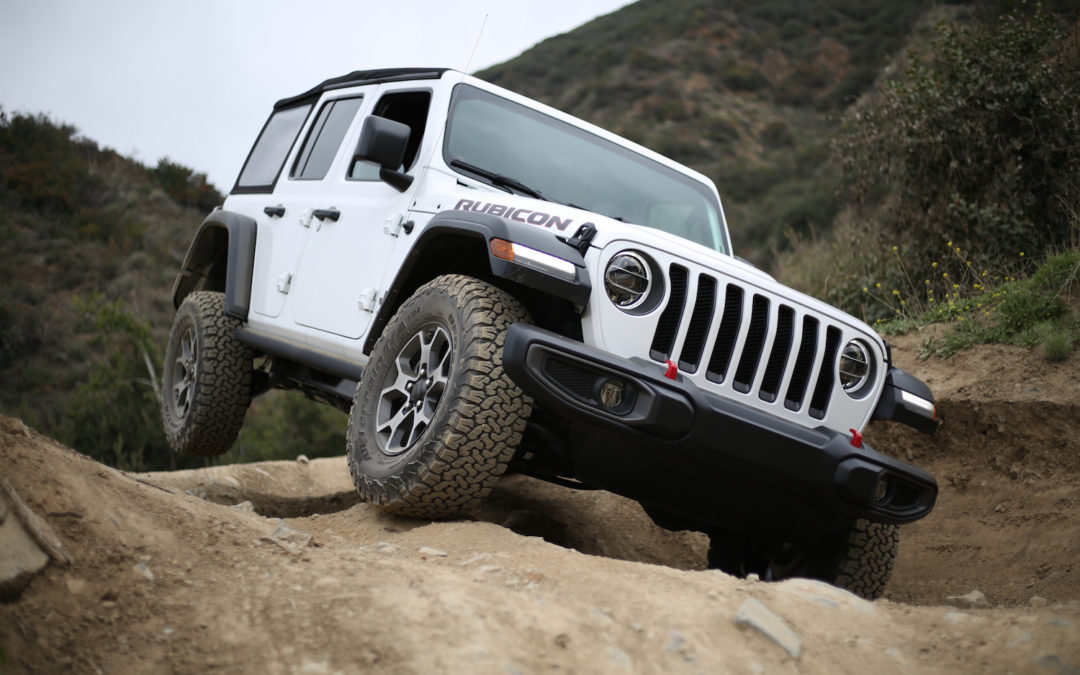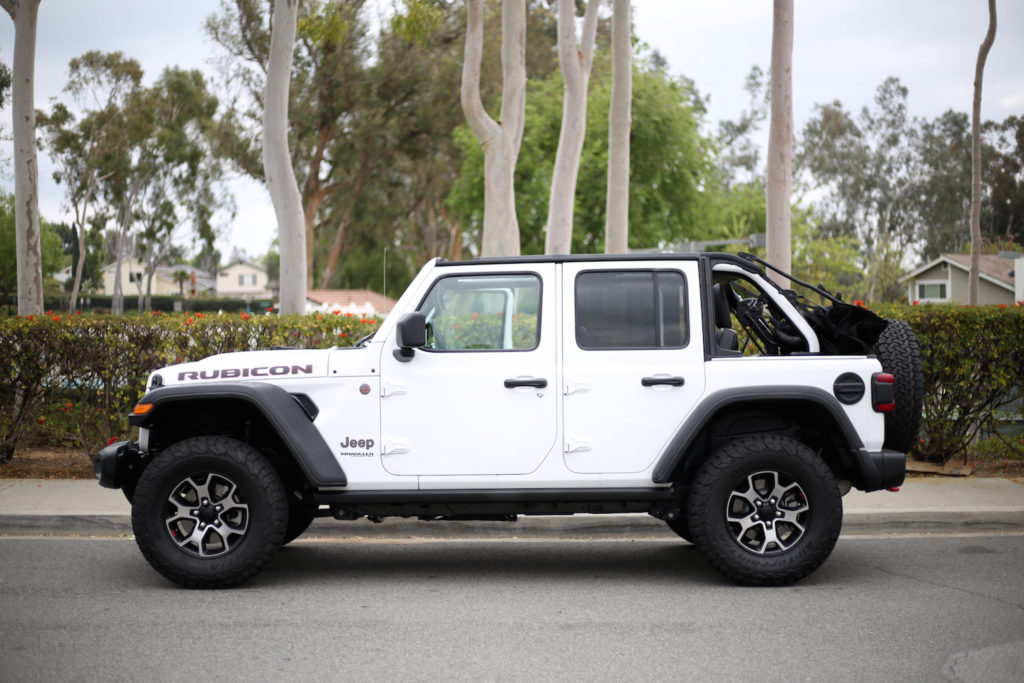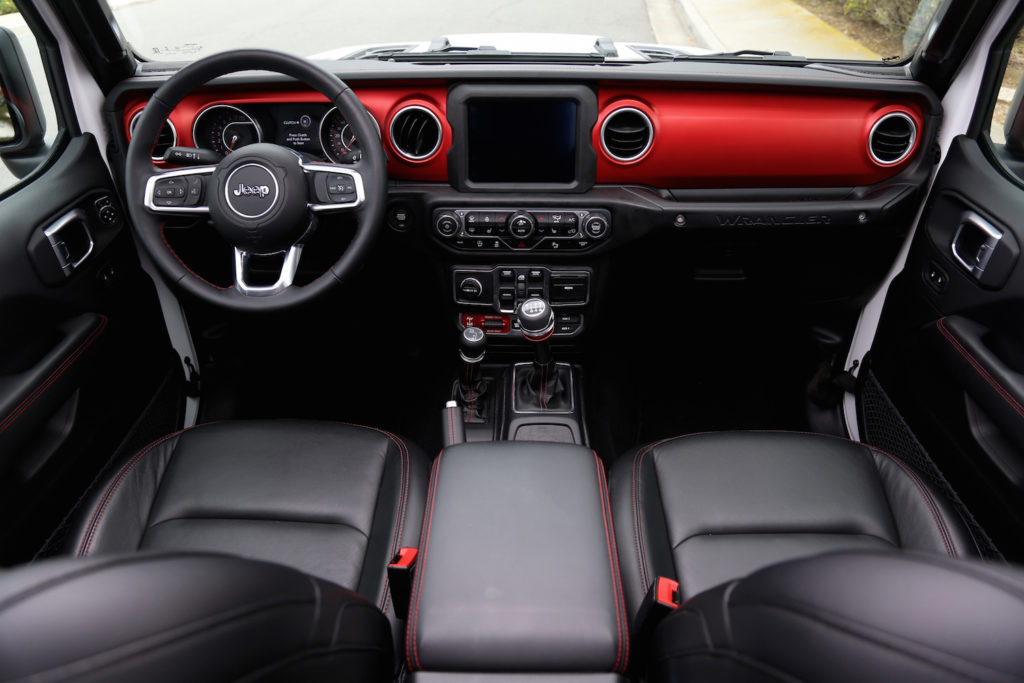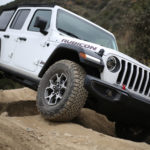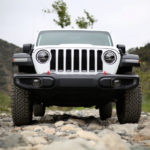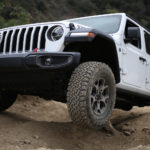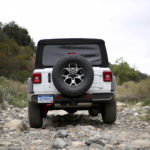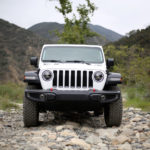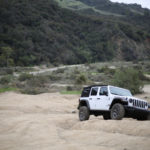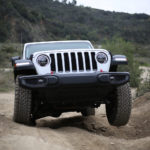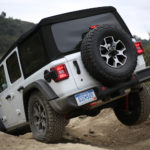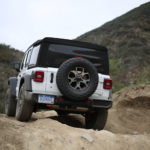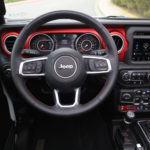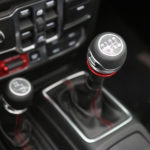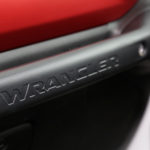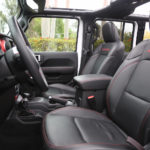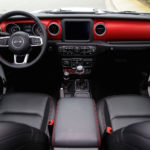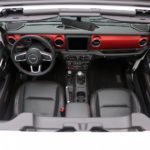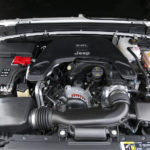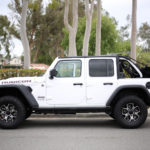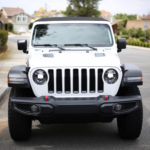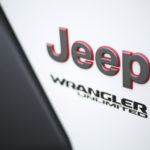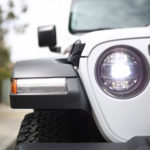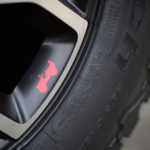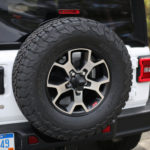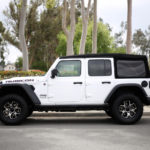Jeep appears to be privy to my problem (and, no doubt, the problem for many Wrangler owners), because it’s promising that the all-new Wrangler JL is finally one you can live with. Better visibility, a smoother ride, advanced interior technology – it’s all part of the package. So says Jeep.
To put these claims to the test, Digital Trends spent a week of the 2018 Jeep Wrangler Rubicon Unlimited (priced from $40,495 plus destination). Few vehicles can challenge the Wrangler off-road, and even fewer stumble into the truck’s unique segment. The closest rivals include Toyota’s 4Runner TRD Pro, Jeep’s own Grand Cherokee Trailhawk, and the Land Rover Discovery. None of these SUVs can take off their tops (or fold their windshields), but if the new Wrangler isn’t any better on-road, that might not matter.
Interior Highlights
There’s little to distinguish the JL generation Wrangler’s exterior from its JK predecessor, so we won’t spend much time picking it apart. Overall, the 2018 model has grown by 2.8 inches in length for two-door models and 3.8 inches for four-doors. Both trucks are 0.2 inches wider. Jeep’s designers hide the growth spurt well with a bigger grill, larger headlights, narrower bumpers, and skinnier fender flares. Other tweaks include LED daytime running lights on the front fenders, rounded window housings, a ventilated hood (Rubicon trims), and a redesigned soft-top. In short, it still looks like a Wrangler.
Inside, however, the changes are stark. Even the most highly optioned JK Wranglers couldn’t escape the feeling of cheapness. Plastic panels, monotone color schemes, and outdated convenience features could sap the life out of any good drive. One look at the Grand Cherokee’s plush quarters told us Jeep could do better with the new Wrangler – and it has.
The JL’s cabin is intuitive, high quality, and eye-catching. The hideous old dashboard bulge is gone, replaced by a flat, vivid red panel that lends a substantially more airy feel to the front cockpit, complemented by increased legroom for rear passengers. Four adults fit comfortably and a relatively low transmission tunnel affords space for a fifth in a pinch. Our tester’s leather-wrapped seats are upgrades to the standard cloth set, but the shape is ergonomic for either configuration. Cargo space is a generous 32 cubic feet with the rear bench in place, and 72.4 cubes with it folded.
Rubicon models come standard with a 7.0-inch UConnect infotainment screen, though an 8.4-inch display is available (paired with a nine-speaker Alpine sound system). A prominent LCD driver display sits between an analog tachometer and speedometer, showing speed, telemetry data, off-road information, media, and more. UConnect continues to be one of our favorite infotainment systems, with clear visuals, snappy response to inputs, and a user-friendly layout. Drivers can use steering wheel controls, voice commands, physical buttons on the center stack, or the touchscreen to adjust vehicle settings, affording plenty of redundancy based on personal preference. Showing Jeep is current with consumer tech, the Wrangler includes a number of USB and USB-C ports, and comes standard with Apple CarPlay and Android Auto connectivity.
Driver aids are limited to blind-spot monitoring with rear cross-traffic alerts and parking sensors, but the new Wrangler’s improved visibility means navigating city streets and highways is a breeze. If there’s anything we’re missing from the JL’s list of available niceties, it’s adaptive cruise control. Such a feature would only be relevant for automatic equipped models, but it’s a big help for long highway trips.
Overall, the updated cabin is more than just good for a Wrangler – it’s a nicer place to spend time than the similarly priced Toyota 4Runner TRD Pro and closer than we would have expected to the premium feel of the Grand Cherokee and Land Rover Discovery.
All Terrain Capable & Comfortable
Under the Rubicon’s vented hood is a 3.6-liter V6 engine mated to a six-speed manual or available eight-speed automatic. A two-speed manual transfer case sends power to the rear wheels or all four wheels at a 4.10 gear ratio. With 285 horsepower and 260 pound-feet of torque on tap, the Wrangler Rubicon has plenty of punch for rural or highway driving – provided you don’t rush into a high gear. Fuel economy is rated at 17 miles per gallon city, 23 mpg highway, and 19 mpg combined (20 mpg with the eight-speed auto) – besting the 4Runner’s 18 mpg combined rating.
Off-road, the V6 is equally satisfying. Motoring up steep inclines or negotiating deep ruts is all in a day’s work. Facing the most challenging off-road conditions, the Rubicon can disconnect its sway bars to allow for greater wheel articulation, and lock its front and rear differentials to use available power more effectively. During our week with the rig, which included a test on some tricky obstacles, we never required these lifelines.
Those desiring more torque and better fuel economy can upgrade (for a fee) to a turbocharged four-cylinder rated at 270hp and 295 lb-ft of torque – accessible earlier in the powerband than the naturally aspirated V6. Jeep will also offer a diesel engine and a plug-in hybrid down the road – both paired exclusively to the eight-speed automatic. If you plan to haul some motorized toys, the four-door Wrangler – rated at 3,500 pounds towing capacity – is your best bet; two-door Wranglers are limited to 2,000 lbs.
It is no surprise that the new Wrangler can handle itself off-road, but, despite Jeep’s assurances, we weren’t prepared for its road manners. Even riding on the Rubicon’s 33-inch all-terrain tires (the biggest ever fitted to a factory Jeep), the rig is composed and smooth. It’s hard to believe the Wrangler still rides on solid axles and upholds the tradition of body-on-frame construction. Apart from some front-end brake dive, the truck restricts body roll mid-corner and steers with reasonable precision (owed to a new recirculating ball and electro-hydraulic assist setup).
If there’s one issue Jeep hasn’t resolved with the new Wrangler, it’s wind noise. At highway speeds, air finds its way into the nooks and crannies of the soft-top to make a whooshing noise. The simple solution is to opt for the hard top, but such a choice all but eliminates spontaneous, open-top motoring. Removing a couple Freedom panels from the fixed roof just isn’t the same.
The best thing we can say about the latest Wrangler’s on-road behavior is that it is unremarkable. You really can drive this vehicle just like any other SUV – a promise no preceding Wrangler could make. Is it more composed than a Land Rover or Grand Cherokee? No. However, those cross-shopping the 4Runner will find the two vehicles equally suited to the daily commute.
The Verdict
Until now, a punishing ride and sloppy handling was simply the price to pay for the Wrangler’s incredible off-road capability and unquestionable cool. Many people have been willing to make such sacrifices, but still more (myself included) have hoped for a better way. After a week with the 2018 Jeep Wrangler Rubicon Unlimited, it is clear Jeep has found the solution.
The new Wrangler is every bit as capable as its uncompromising ancestors, yet it also affords premium amenities and ride quality to rival traditional SUVs. The Land Rover Discovery can hang with the Wrangler on most trails and introduces luxury touches beyond the scope of Jeep’s current parts bin, but at $52,090 to start, the Discovery is over budget for most mass-market shoppers. At a much more palatable $43,395, the Jeep Grand Cherokee Trackhawk trades some of the Wrangler’s off-road tenacity for long-haul comfort. If you aren’t in love with the Wrangler’s look, and can apply another $6,000 to the cause, the Trackhawk is an excellent alternative.
The 2018 Wrangler Rubicon Unlimited’s closest competitor is Toyota’s 4Runner TRD Pro ($42,875). Priced closest to the Wrangler, offering similar curb appeal, and earning comparable respect from off-road enthusiasts, the TRD Pro deserves consideration. Do keep in mind, however, that the 4Runner is due for a redesign in the next year or two.
More than any Wrangler before, we consider this is a great buy. Putting the Wrangler on top of its competitors is its unique versatility (how many other convertible, solid-axle SUVs can you name?), segment-best pricing, customization potential, and standard convenience features. Be you purist or pragmatist, the new Wrangler delights.

